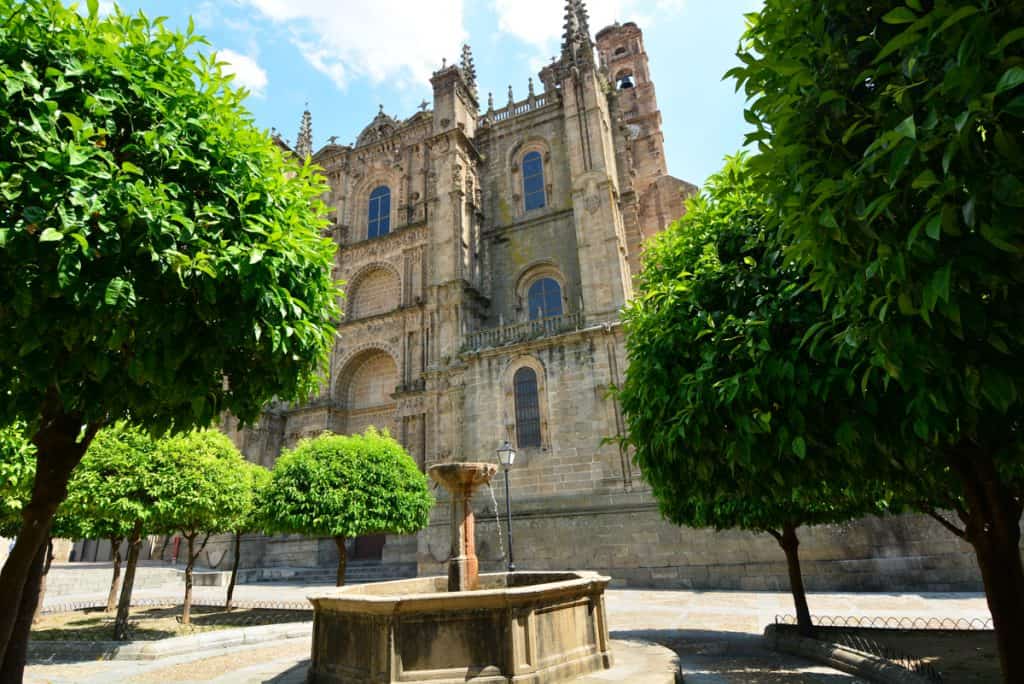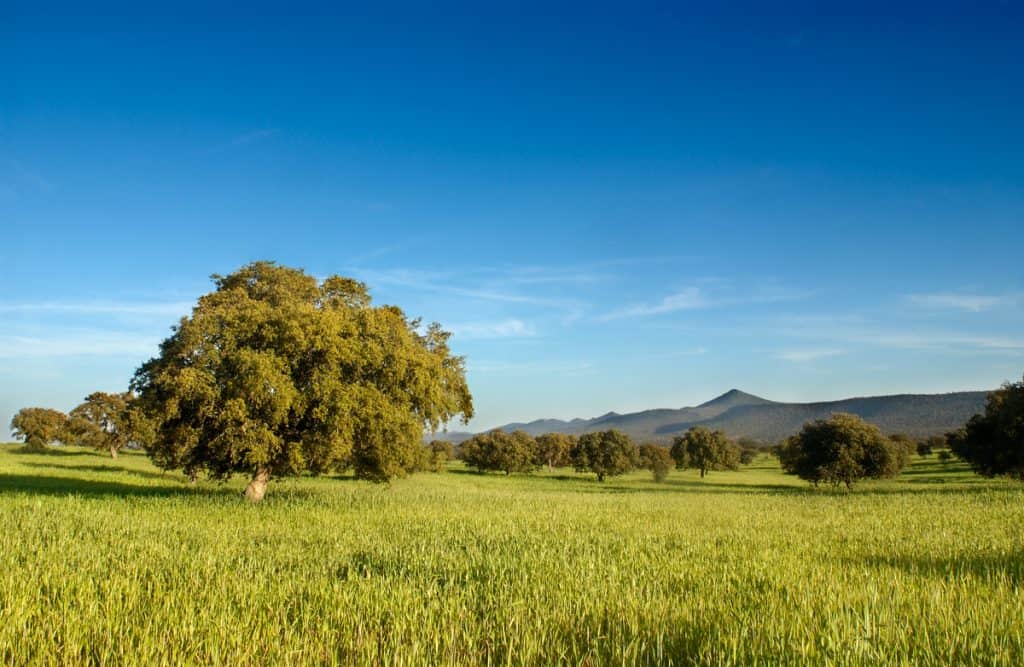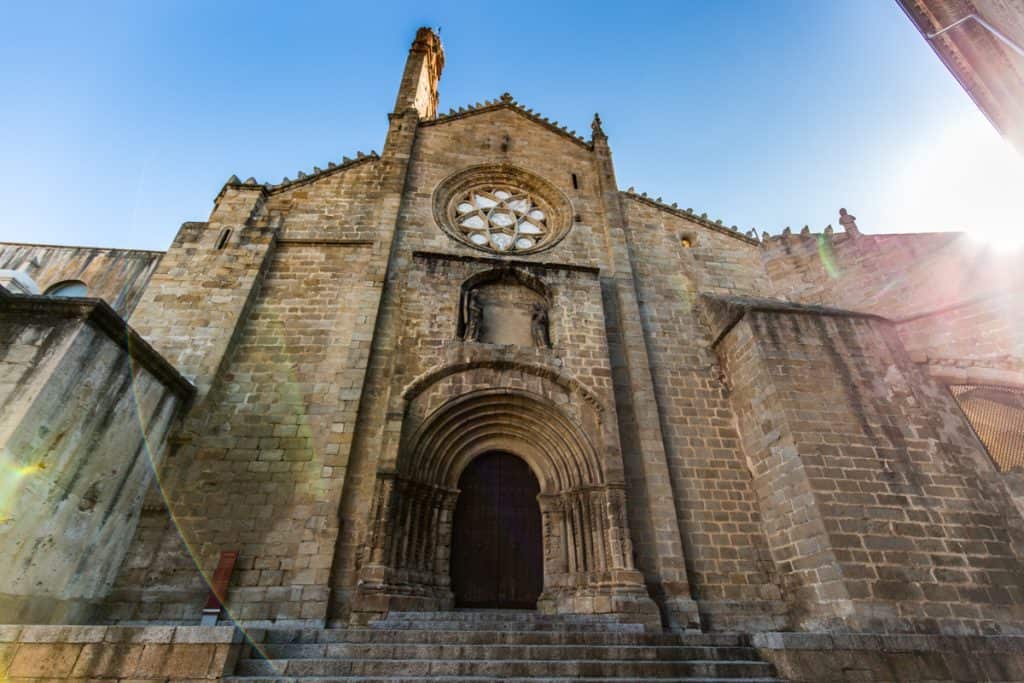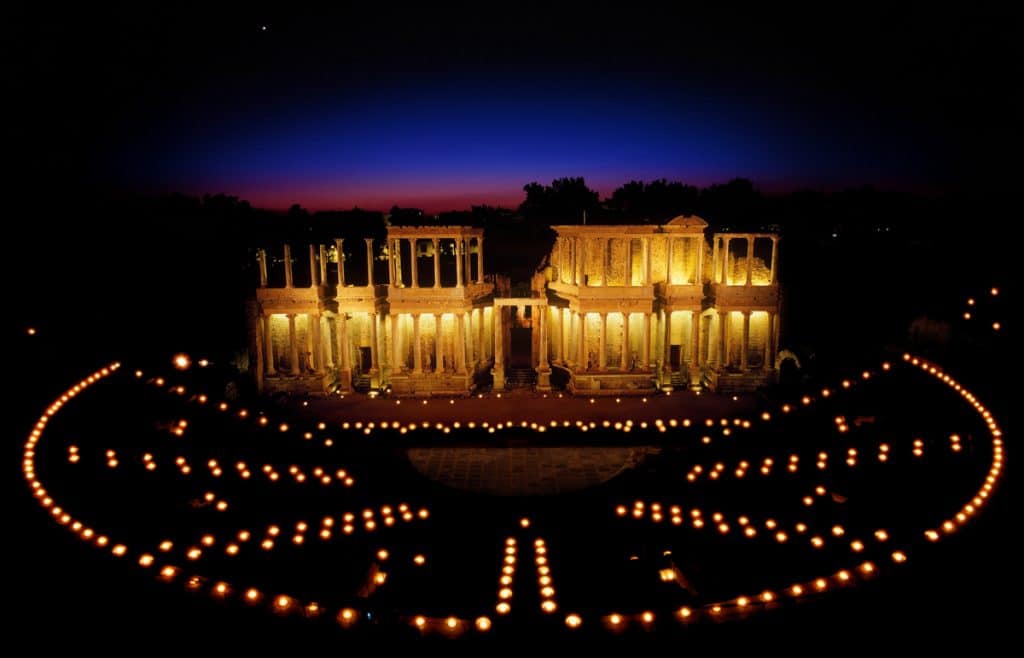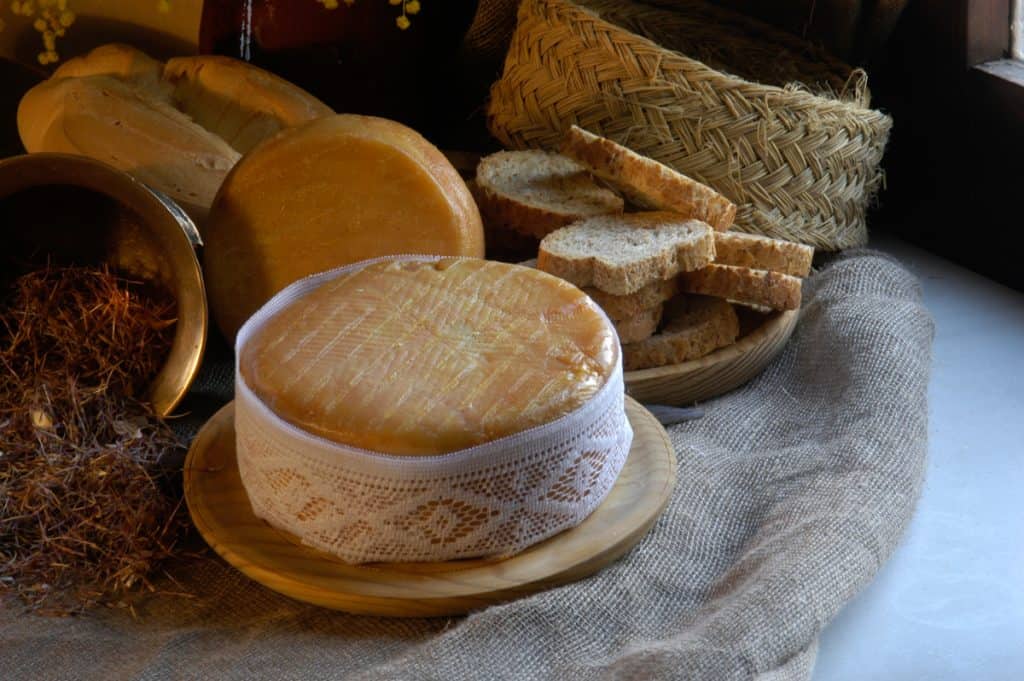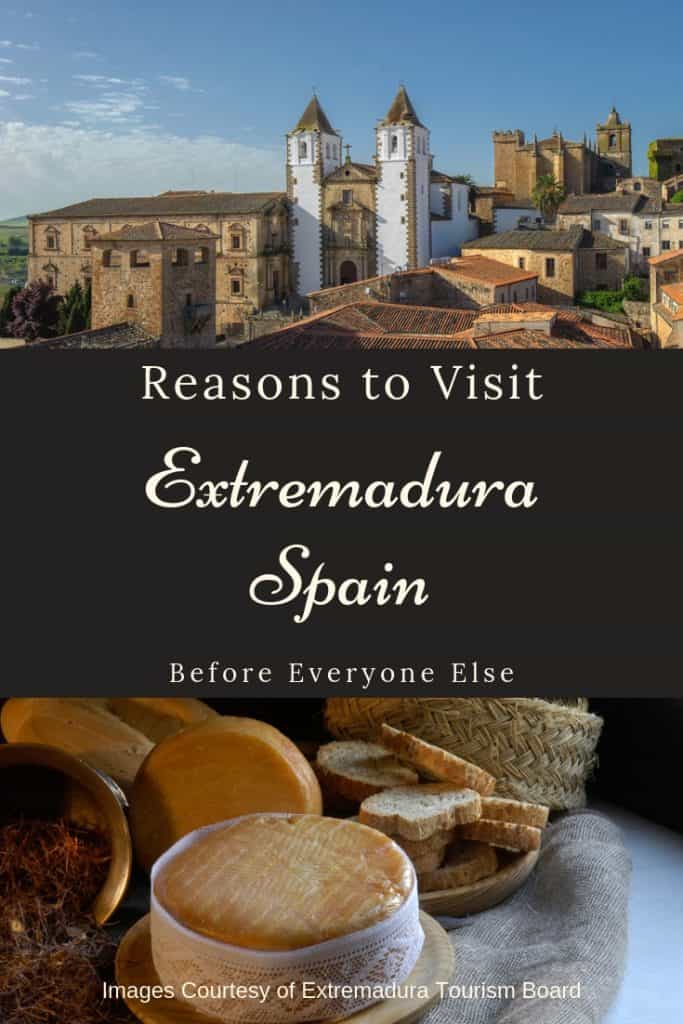Why should you visit Extremadura, Spain? Most people don’t know the answer to that question but, since you’re reading this post, that’s about to change for you. There is so much to see and so many things to do in Extremadura. Chances are, by the time you’ve finished this article, you’ll be spreading the word and planning a trip.
Where is Extremadura?
Extremadura is in the Western Iberian Peninsula of Spain. It’s bordered by Portugal to the west, Andalucia (home of Seville and Granada) to the south and Castile and Leon to the north and east. At one time it was an important part of the Roman Empire. Today it’s probably the most overlooked region of Spain which is a shame because it has so much to offer.
What are the things to do in Extremadura, Spain?
Extremadura covers a large area and with a population density of only 30 people per sq km there’s plenty of beautiful open countryside to explore. This means lots of opportunity to immerse yourself in nature and experience all the activities that go along with that.
However, that’s not to say that only nature lovers will enjoy Extremadura. There’s an immense amount of history here which means impressive architecture, archaeological sites, castles and cathedrals. Plus, since there is so much open land it’s heaven for the foodie in search of fabulous farm to table gastronomic delights.
There are literally hundreds of things to do in this underrated and under-explored area of Spain. Here are just 10 compelling reasons (in no particular order) to visit Extremadura as soon as you can. It really is one of the best places to visit in Spain.
1. Melt in Your Mouth Ham and Creamy Cheese
You’ve likely heard of the famous Jamon Iberico (aka Iberian Ham) that comes from fine, Spanish Iberian pigs. But what you may not know is that some of the very best of this delectable meat is to be found in Extremadura.
The finest quality is known as Jamon Iberico de Bellota. To achieve this status the pigs must roam free on pastures and oak groves called “dehesa” eating only acorns (bellota) and natural grasses and plants.
Because Extremadura is still largely rural and full of unspoiled nature there’s plenty of land available for these pig haven dehesas. This also means that the heavenly ham can often be purchased at a cheaper price than in the rest of Spain.
If you’re a vegetarian don’t worry, Extremadura is also known for some pretty fabulous cheese. The most famous is the Torta del Casar, named for its origin in Caceres. This creamy, aromatic, sheep’s milk cheese has attained the Denomination of Origin (D.O) status. As does the labor intensive La Serena cheese and famous Ibores goat’s cheese.
2. Remarkable Roman Ruins

Spain is likely not the first place that comes to mind when you think of Roman ruins. But, Extremadura is actually full of fabulous historic sites. This is because it was once part of Lusitania which played a very important role in the Western Roman Empire. Plus, the fact that its still off the well-traveled tourist path means that you can explore these sites without hoards of other visitors.
Some of the best Roman sites are in Merida. There’s the lovely Puente Romano (Roman Bridge) which is the longest surviving bridge from Roman times with a span of 2,477 feet and 64 elegant arches. Then you have the Roman Theater, which is astoundingly well-preserved, even though it wasn’t excavated until the 1970’s. So well-preserved, in fact, that it still maintains its original function as a theater.
But there’s more than Merida for Roman masterpieces. In Caparra you can see the only four-sided Roman arch still standing and the Alcantara Bridge, just outside of Caceres, is the best preserved Roman bridge in all of Spain.
3. Unspoiled Natural Beauty

Extremadura, Spain has plenty of historic sites, quaint towns and stunning architecture. But, since the more than 16,000 square miles of Extremadura is rural, with a low population density, there’s also an abundance of unspoiled, natural beauty.
This region has enough parks, protected landscapes, nature reserves and biodiversity to excite any nature lover and adventure seeker. The star of the show is Monfrague National Park in Caceres. Within this natural beauty you can see Mediterranean forest, the river Tagus, gently-sloping mountains and open pastures. It also sits within the Monfrague Biosphere Reserve making it a very popular spot for wildlife and birdwatchers.
But Monfrague is just the beginning. There’s also Cornalvo Natural Park, the International Tagus Natural Park, the Villuercas-Ibores-Jara Geopark, Orellana reservoir, and Las Hurdes. These are just a few examples of the many options for hiking, walking, cycling, swimming, rafting, wildlife watching and many other nature-based activities and adventures.
4. UNESCO Sites

If you keep a checklist of the UNESCO sites around the world you can check off a few of them in Extremadura. There are three World Heritage Site Cities: Caceres, Merida and Guadalupe. Plus there’s the UNESCO listed Biosphere Reserves of Monfrague and the International Tagus Natural Park, and the Geopark of Villuercas-Ibores-Jara.
Caceres will take you back in time with its array of well-preserved architecture from the Medieval and Renaissance times. Merida was founded by the Romans in 25BC and was once the capital of the Roman province of Lusitania. Guadalupe is home to the Royal Monastery of Guadalupe and is known as a center for spiritual and artistic works.
With the unspoiled natural beauty and abundance of indigenous flora, fauna and wildlife (some of which are endangered), Monfrague and Tagus parks are wonderful examples of UNESCO’s declared Biosphere Reserves.
Villuercas-Ibores-Jara is one of only 147 UNESCO Global Geoparks in the world. A designation given to “…unified geographical areas where sites and landscapes of international geological significance are managed with a holistic concept of protection, education and sustainable development.”
5. Ancient Cities and Quaint Towns
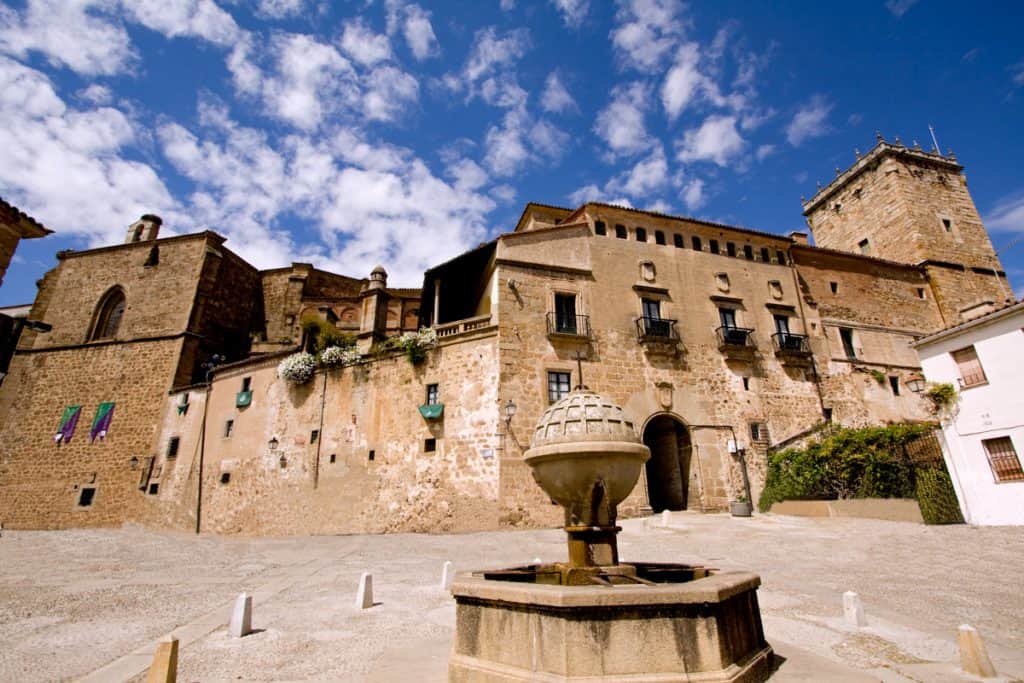
Although relatively overlooked today as an international tourist destination, Extremadura was once a very important region. Its long history has left behind some wonderful towns displaying influences from Roman and Medieval times as well as the Moors.
As already mentioned, the capital city of Merida has a dazzling array of Roman ruins and monuments that rival Rome itself. And the narrow, twisty streets of Caceres lead you into a magical town straight out of the Middle Ages.
Then there’s the “conquistador town” of Trujillo. A quaint, small town with a beautiful Plaza Mayor, elaborate churches, elegant manor houses and the spectacular Castillo de Trujillo (Trujillo Castle) which boasts an awesome view.
Plasencia is one of the larger towns in Extremadura with more lovely ancient buildings and charming narrow streets. However, the main draw here is the Catedral de Plasencia. It’s very unique in that it’s actually two cathedrals in one: the “Old Cathedral” built in the 12th-13th centuries and the “New Cathedral” from the 15th-16th Centuries. This means that there’s a mix of Romanesque, Gothic and Renaissance styles.
The small towns of Guadalupe and Zafra are also worth a visit. Guadalupe is home to the impressive Royal Monastery of Santa Maria de Guadalupe as well as other fine examples of Gothic-style architecture. Zafra is known as “Little Seville” with its narrow streets, whitewashed buildings and Moorish Castle turned hotel.
One thing you will find in every town is a plaza or square. This is usually the heart of the city and where you’ll really get to experience a bit of local life. Make sure to spend some time in these lovely plazas where there will often be some live music or entertainment and will always be a social gathering place.
Want to read about more beautiful towns in Spain? Take a look at this article of great places to visit from Malaga, Spain.
6. Fabulous Fiestas of Tourist Interest
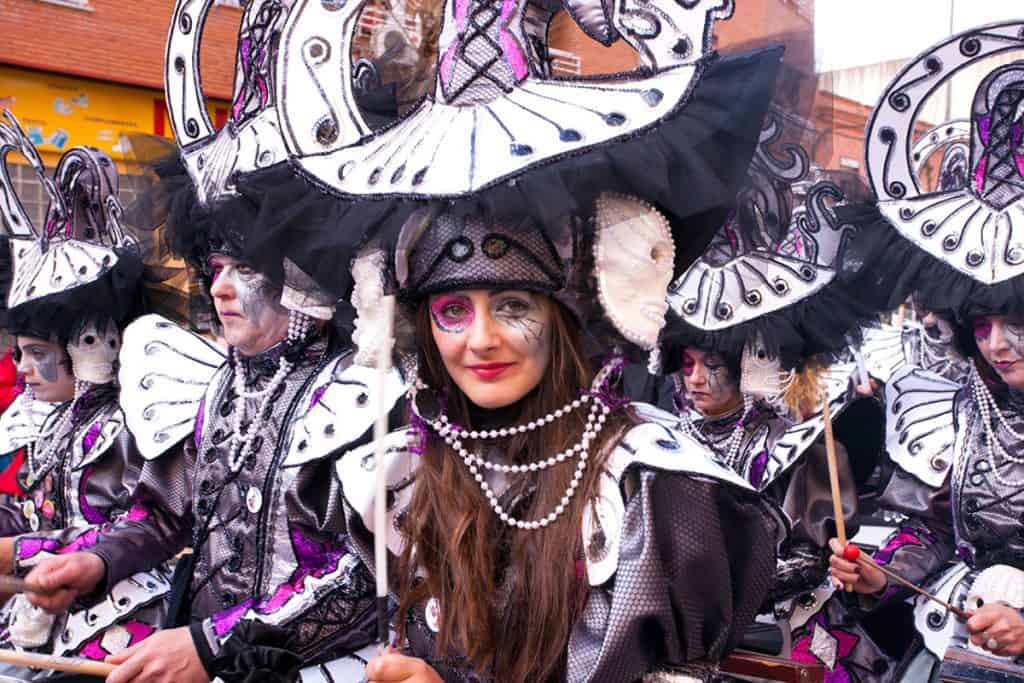
The region of Extremadura hosts more than 80 festivals per year. Some are religion or tradition based, others focus on culture and the arts and then there’s the festivals that are all about just having fun.
Carnival, which marks the beginning of Lent, is celebrated all over Spain but the fiesta in Badajoz is one of the most well-known. With vibrant colors, lively music, singing, dancing and parades all ending with the burning of the sardine it’s a five day event you’ll never forget.
Holy Week takes place for seven days from Palm Sunday to Easter Sunday and every town will have similar festivities, although each will have their own special way of commemorating the Biblical event. There will be processions, stations of penance, and incredible statues paraded around town. Regardless of your religious beliefs, it’s quite a moving and inspirational sight to see.
If you love performing arts festivals you’ll find plenty in Extremadura. The famous WOMAD, which takes place all over the world, has had a home in Caceres since 1992. For an unforgettable theatrical event, the Classic Theater Festival of Merida will take you back in time as you watch a performance on the magnificent Roman Theater stage.
Then there’s the weird and wild El Jarramplas where some lucky local dresses up in a bizarre, colorful, demon-like costume and plays the drum while being pelted with turnips. Or Los Escobazos in Jarandilla de la Vera where the Immaculate Conception is celebrated by hitting each other with brooms lit on fire.
This is just a small sampling of the many fiestas held in Extremadura. Whatever time of year you visit there’s sure to be some sort of celebration going on.
7. Historic Routes and Important Museums
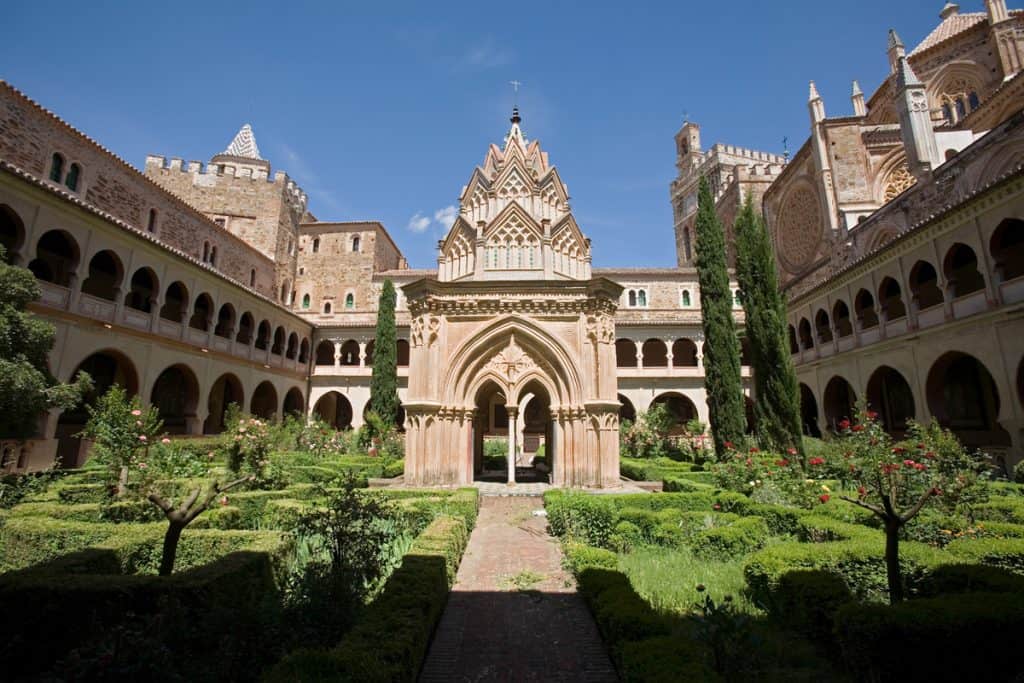
If you’ve read this far you’re now pretty aware that Extremadura has some intense history. There are the Roman ruins in Merida and the Medieval town of Caceres for starters, but if you’re a history buff you’ll be wanting even more and you won’t be disappointed.
A good portion of the historic La Via de la Plata (The Silver Way) runs through Extremadura. Today this ancient Roman trade route is part of the Camino de Santiago and this portion will take you past stunning landscape as well as important historical sites. It’s like walking through an open-air museum.
Another historic route to follow is that of Queen Isabella the Catholic, the first Queen of Spain. The route follows in the footsteps of the late Queen covering some of the keys moments in her life including the Guadalupe Monastery where her father and brother were buried.
There are also a great many museums in Extremadura. Two that are not to be missed are the Museo de Caceres and the Museo Nacional de Arte Romano.
The Museo de Caceres is housed within two UNESCO World Heritage buildings and displays both archaeological pieces and fine contemporary and Medieval artwork.
Although it was built in 1986 the architecture of the Museo Nacional de Arte Romano is quite Romanesque with its stonework and arches. Inside you will find an impressive collection of Roman artifacts and artwork including statues, sculptures, paintings, mosaics and glassworks.
If you want to learn more about this beautiful country, here’s a great article on interesting facts about Spain!
8. Castles, Castles, Castles

Many of the towns in Extremadura have a storybook feel or look like a scene from Game of Thrones with their fairy tale castles, Medieval churches and Gothic cathedrals.
There are more than 330 castles in Extremadura. One of the most visited is probably Trujillo Castle which was used (along with some movie magic) as Casterly Rock in the Game of Thrones series. This impressive castle is on a hill overlooking the town and surrounding countryside making for a spectacular view. It dates back to the 13th century but it sits on top of an Arab Fortress built four centuries before.
With so many castles it would take more than a single post to talk about them all so suffice it to say that wherever you travel in Extremadura you will see castles. You will spot them on hilltops and in the center of town (Castle of Valencia del Ventoso), some still have imposing outer walls (the Alcazaba), some have impressive towers (Castle of Luna), and others have fairy-tale turrets.
Many of them are free to explore every day and the best part is that with the very few tourists around you may have a castle all to yourself.
9. Heaven for Wine Lovers

We mentioned the delicious Iberian Ham and Torta del Cesar above and as any foodie knows, delicacies like these should be enjoyed with a good glass of wine. Luckily Extremadura has its own highly regarded wine-producing region.
The area of Ribera del Guadiana produces a good range of reds, whites, roses and even cava so there’s something for every palate…and every meal.
If tasting local wine is high up on your list of things to enjoy when you travel then following the Ribera del Guadiana Wine Route will definitely make your holiday. The route covers 20 municipalities of Badajoz allowing you to really explore this interesting province full of history, culture, nature and gastronomic delights.
Imagine a trip made up of tastings at lovely wineries, visiting historic archaeological sites and Roman ruins, eating delicious farm to table meals in a Medieval town and admiring castles, cathedrals and Moorish architecture as you travel your route. If this sounds like heaven to you start planning a trip to Extremadura, Spain.
10. Fewer Tourists
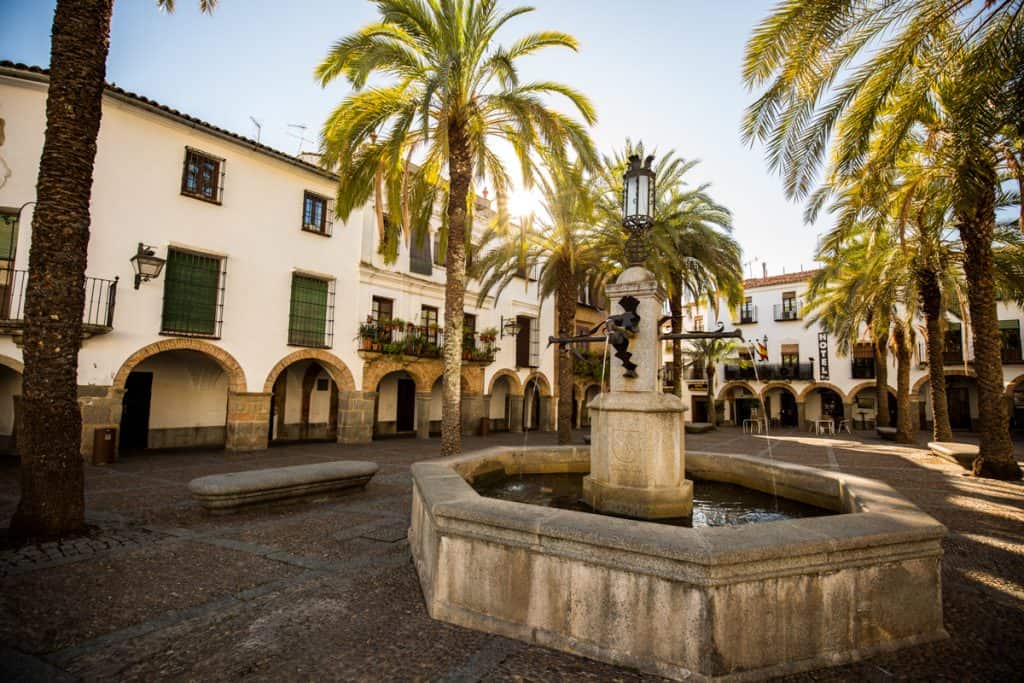
With more and more people traveling to Europe there is the fairly new, but rapidly growing issue, labeled as “overtourism.” Now, as someone who makes a living in the travel industry I find myself in a bit of a predicament. Readers understandably want to know all about the top destinations to visit around the world and if I don’t write about them someone else will. However, I also feel a huge responsibility to be a part of the solution rather than contribute to the problem. So, when I discover a destination like Extremadura I’m thrilled to write about it.
Extremadura, Spain has everything I look for in a destination: natural beauty, historic sites, culture and tradition, interesting architecture, quaint and authentic towns, friendly people, and great food. What this region does not have is masses of tourists!
Now, if you’re the type of traveler who wants to go where things feel familiar (lots of fast food restaurants, everyone speaking English, plenty of people from your home country) then maybe Extremadura isn’t for you. But, if you travel for the mind, heart and eye opening experiences that discovering a new and unfamiliar place can give you then start making plans to go soon.
By visiting Extremadura not only will you be giving yourself the opportunity to see a beautiful, interesting and historical area but you’ll also be giving a break to the cities like Barcelona, Venice and Paris. Quite frankly they have more visitors than they can handle anyway. Plus, you can be the most interesting person at the next dinner party when you start describing the wonders of this place in Spain that nobody has heard of…yet!
Pin It For Later

Born in England, Sarah developed her wanderlust at a young age as she traveled around Europe with her parents. As a young adult she spent every penny she could on experiences as opposed to possessions. Eventually she found a way to earn a living doing what she loved: traveling, writing and capturing images of the wondrous world we live in. When not on the go Sarah enjoys time in her “sometimes home” of Vancouver.

